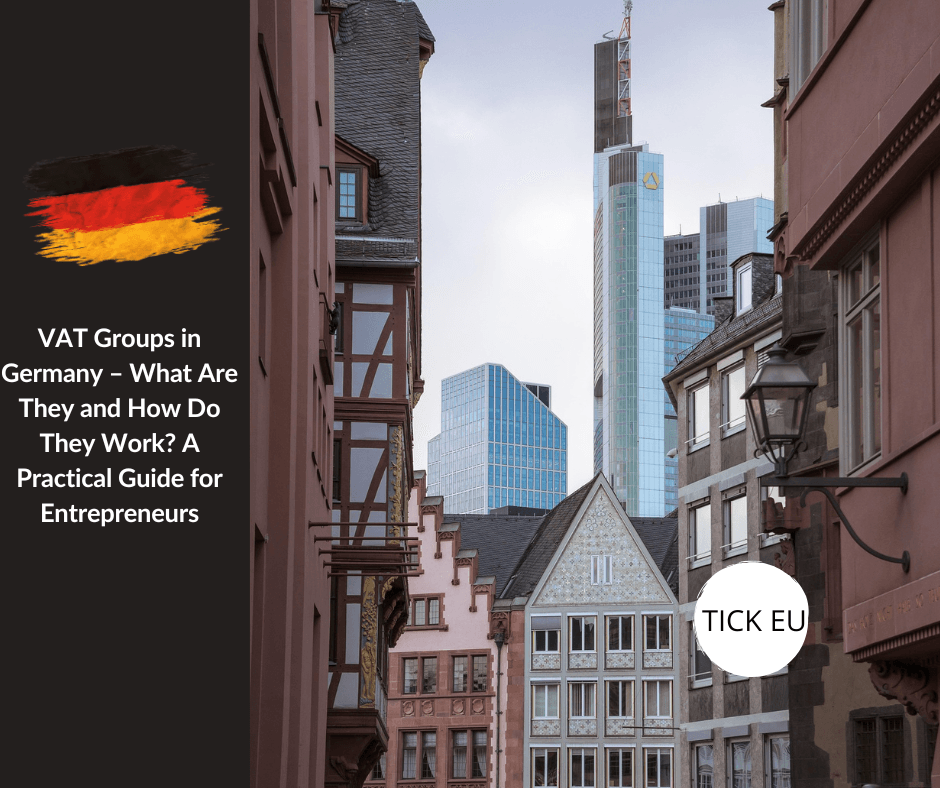VAT Groups in Germany – What Are They and How Do They Work?
In Germany, tax law offers an interesting solution for companies that are closely connected – the possibility of forming a so-called VAT group (Organschaft). Although it may sound technical, in practice, it provides significant simplification in VAT settlements for businesses operating through multiple companies. Below you’ll find a practical overview of what VAT groups are, when it’s worth establishing one, and what to keep in mind to stay compliant with German tax law.
What Is a VAT Group in Germany?
A VAT group in Germany allows a parent company and its subsidiaries to be treated as a single VAT taxpayer. In practice, this means that only the parent company is required to file VAT returns on behalf of the entire group. This not only simplifies accounting but also enables more efficient tax management within a holding structure.
However, certain legal and organizational conditions must be met to take advantage of this mechanism. A VAT group does not arise automatically – it must be clearly documented and fulfill the criteria of financial, organizational, and economic integration.
What Are the Requirements to Create a VAT Group?
The parent company must own at least 50% of the shares in its subsidiaries – this is the basic requirement confirming financial integration. But that’s just the start. For German tax authorities to recognize a VAT group, three key criteria must be met:
- Financial Integration – The parent company must hold the majority of voting rights and have actual control over the subsidiaries’ decisions.
- Organizational Integration – Management personnel of the subsidiaries must be formally linked to the parent company. For example, the same managing director might oversee both entities but be formally employed only by the parent.
- Economic Integration – The subsidiaries’ operations must be permanently and functionally connected with those of the parent company. This might include joint ventures, aligned business goals, or shared resources.
What Changes After Forming a VAT Group?
Once the conditions above are met and a VAT group is established, the tax situation becomes significantly simplified. All transactions between the parent and subsidiary companies are no longer subject to VAT – they are treated as internal activities within a single economic unit.
Importantly, the VAT group operates under a single VAT return submitted by the parent company, which reports all sales, deducts input VAT, and makes payments to the tax office. Subsidiaries do not file their own VAT returns but may still need individual EU VAT numbers for intra-community transactions.
What About Tax Liability?
Although the parent company is formally responsible for the VAT returns of the entire group, German law imposes joint and several liability on the subsidiaries. This means the tax office can pursue any member of the VAT group for outstanding VAT liabilities – not just the parent company.
Can Any Company Join a VAT Group?
No. German law sets clear conditions for who can participate. The parent company may take various legal forms (e.g., GmbH, partnership, or even a sole proprietorship), but subsidiaries generally need to be corporate entities. In exceptional cases, partnerships may also be included if they meet specific legal criteria.
A VAT group cannot be formed if the parent company does not have its registered office in Germany – this is a fundamental requirement. Moreover, it is not possible to separately register a branch for VAT purposes – its activities must be included in the parent company’s VAT return.
VAT Groups and Cross-Border Transactions
Although a VAT group simplifies domestic VAT reporting, it does not eliminate all tax obligations. Companies still need to comply with several formal requirements:
- Intra-community supplies – Subsidiaries may still require individual EU VAT numbers if they conduct EU transactions.
- OSS and reverse charge – Some transactions (e.g., B2C sales or those via online platforms) may still require additional VAT registrations or filings, regardless of the VAT group.
- Intrastat and EC Sales List – These may be filed collectively by the parent company, but only if allowed and practical under German law.
Practical Benefits of a VAT Group
For large companies and corporate groups, a German VAT group can offer clear advantages: simplified filings, no VAT on internal transactions, and improved tax oversight. It’s also more administratively convenient – one return, one payment deadline, one responsible entity. An integrated structure also makes it easier to manage cash flows and plan group-level financial strategies.
What to Consider Before Setting Up a VAT Group
First – a VAT group is not always beneficial. For smaller entities with limited internal transactions, the cost and complexity of forming and maintaining the group may outweigh the benefits. Second – true integration is required across financial, organizational, and economic levels, which calls for a well-designed business structure.
Also, while a VAT group can be applied retroactively, this may trigger audits or require adjustments. Therefore, it’s usually better to plan and implement the structure in advance.
Is a VAT Group Right for Your Business?
Forming a VAT group in Germany isn’t just a formal step – it’s a strategic decision that can bring real benefits, but also new responsibilities. It’s worth considering especially if your company operates as a holding, has subsidiaries, and engages in complex business operations in Germany. If, however, your structure is simpler and internal transactions are minimal, traditional VAT filing may be more efficient.
In all cases, consult with a tax advisor experienced in German regulations before making the decision. That way, you can avoid misunderstandings, optimize your tax position, and choose the solution that best fits your business.
Want to learn more? We’ve compiled additional detailed information in a separate document – contact us to get access.


